Can an Oxford University Mathematician solve a High School Physics Exam? (with @PhysicsOnline)
TLDRIn a delightful educational video, Dr. Tom Crawford, a mathematician from the University of Oxford, is seen engaging in an A-Level Physics exam challenge, despite his background in mathematics. He is joined by Lewis, the host of the YouTube channel 'Physics Online,' who provides valuable insights and assistance throughout the session. The video is a testament to the interconnectedness of physics and mathematics as they tackle a variety of physics problems, including force diagrams, projectile motion, and the concept of elastic and inelastic collisions. Dr. Crawford demonstrates the application of mathematical principles to solve physics problems, emphasizing the importance of both subjects for students aiming for a career in STEM fields. The video is not only informative but also entertaining, showcasing the beauty of problem-solving in science and the joy of learning through collaboration.
Takeaways
- 📚 Dr. Tom Crawford, a mathematician from the University of Oxford, engaged in an A-Level Physics exam, demonstrating the overlap between mathematics and physics.
- 🤓 Lewis, from the YouTube channel 'physics online', challenged Dr. Crawford to take on the physics paper, focusing on the mathematical aspects of the questions.
- 🚗 The first question involved creating a free body diagram for a car being towed up a hill, which Dr. Crawford approached by simplifying the scenario to a point mass and identifying forces acting on it.
- 🔢 Dr. Crawford emphasized the importance of using trigonometry to calculate the component of the weight acting down the slope, which was key to solving the problem.
- 🧲 When discussing frictional forces and the force provided by a tow bar, it was highlighted that these forces must be considered in equilibrium for an object moving at a constant speed.
- ⚙️ The concept of Young's modulus was introduced, which relates to the elasticity of a material, and was calculated using the stress, strain, and cross-sectional area of a steel toe bar.
- ✋ Dr. Crawford pointed out the utility of symmetry in physics problems, such as in projectile motion, to simplify calculations and understand the underlying principles.
- 🏹 In a discussion on collisions, the difference between elastic and inelastic collisions was explained, noting that inelastic collisions involve energy transfer to other forms, often resulting in the objects sticking together.
- 📉 The impact of damping on the amplitude and frequency of an oscillator was covered, noting that less damping leads to higher amplitude oscillations and a thinner peak in the frequency response graph.
- 📐 The principle of Hooke's law was applied to a spring system, where the elastic potential energy stored in the spring was shown to be proportional to the mass squared of the hanging object.
- 🔍 The calculation of percentage uncertainty in the value of the Young's modulus due to experimental errors was discussed, highlighting the importance of identifying the largest sources of error in an experiment.
Q & A
What is the topic of discussion in the provided transcript?
-The topic of discussion is an A-Level Physics exam, which is being tackled by Dr. Tom Crawford, a mathematician, with the help of Lewis, who runs the YouTube channel 'physics online'. They discuss various physics concepts and problems, including free body diagrams, projectile motion, and Young's modulus.
What is a free body diagram?
-A free body diagram is a simplified representation used in physics to visualize all the forces acting on an object. It helps in analyzing the dynamics of the object by ignoring its actual shape and complexity and focusing on the forces involved.
Why is the mass of the car important in the context of the car being pulled up a hill?
-The mass of the car is important because it determines the gravitational force acting on it, which in turn affects the amount of force required to pull the car up the hill. It is also used to calculate the weight of the car, which is a force that needs to be overcome by the towing force.
What is the significance of the angle in the car being pulled up a hill scenario?
-The angle is significant as it helps in calculating the component of the gravitational force acting down the slope, which opposes the motion of the car. It is used in trigonometric calculations to find the forces acting on the car in different directions.
How does the concept of equilibrium apply to the car moving at a constant speed up the hill?
-In the context of equilibrium, even though the car is moving, it is in a state of dynamic equilibrium where the net force acting on it is zero because it is moving at a constant speed. This means that the upward force provided by the towing bar is equal to the sum of the gravitational force component down the slope and the frictional force.
What is the work done by a force in physics?
-In physics, work done by a force is the energy transferred to an object when the force causes the object to move. It is calculated as the product of the force and the distance over which the force is applied, in the direction of the force.
What is Young's modulus and why is it important in the context of the steel toe bar?
-Young's modulus is a measure of the stiffness of a material. It is defined as the ratio of stress (force per unit area) to strain (proportional deformation). In the context of the steel toe bar, it is important to understand how much the bar will deform or extend when a force is applied to it, which is crucial for its structural integrity and performance.
How does the concept of projectile motion apply to the arrow being fired towards the target?
-Projectile motion is the motion of an object thrown or launched into the air, subject to only the acceleration of gravity. In the case of the arrow, it is fired at an angle and follows a curved path, which can be analyzed by breaking down its motion into horizontal and vertical components. The horizontal motion is constant, while the vertical motion is affected by gravity, causing the arrow to rise and then fall.
What is the role of air resistance in the arrow's motion according to the problem statement?
-According to the problem statement, air resistance has a negligible effect on the motion of the arrow. This is an idealization that allows for the simplification of the physics problem, ignoring real-world factors that could affect the arrow's flight, such as air resistance or wind.
What is the principle of conservation of momentum?
-The principle of conservation of momentum states that the total momentum of a closed system of objects remains constant, provided no external forces are acting on it. This principle is fundamental in analyzing collisions and other interactions where the total momentum before and after an event remains the same.
Why is the kinetic energy of the arrow at its maximum when it is fired, and why does it change as it travels towards the target?
-The kinetic energy of the arrow is at its maximum when it is fired because it has an initial velocity at that point. As the arrow travels towards the target, its kinetic energy decreases due to the work done against gravity and air resistance (although the latter is considered negligible in this scenario). At the highest point of its trajectory, the vertical component of the arrow's velocity is zero, and it reaches a minimum kinetic energy before starting to fall back down.
Outlines
😀 Introduction to A-Level Physics Challenge
Dr. Tom Crawford, a mathematician from the University of Oxford, is joined by Lewis, who runs the YouTube channel 'physics online'. They discuss taking on an A-Level Physics paper, which is typically taken by 18-year-old students in the UK. Although Dr. Crawford is a mathematician, he is eager to apply his skills to physics problems, especially those with a mathematical bent. Lewis challenges Dr. Crawford to solve a few physics questions, focusing on the mathematical aspects rather than the deep understanding of physics. They begin with a real-world scenario involving a car being towed up a hill and drawing a free body diagram.
📐 Analyzing Forces and Calculating Work
The duo discusses the forces acting on a car being towed up a slope, including gravity, friction, and the tension from a tow bar. They use trigonometry and physics principles to calculate the component of the weight acting down the slope and the total frictional force. They then determine the force provided by the tow bar and calculate the work done by this force as the car travels from point A to B, using the concept of energy transfer and real-world scenario reasoning.
🎓 Understanding Young's Modulus and Material Deformation
The conversation shifts to engineering and physics concepts, specifically Young's Modulus, which is a measure of a material's stiffness. They discuss the properties of steel, including its Young's Modulus, and how it deforms under force. Dr. Crawford uses the provided dimensions and material properties of a steel tow bar to calculate the expected extension of the bar under the applied force, using mathematical formulas and physics concepts such as stress, strain, and the relationship between force, area, and extension.
🏋️♂️ Projectile Motion and Energy Conservation
The next topic is projectile motion, specifically the motion of an arrow fired towards a target. They discuss the arrow's initial kinetic energy, the effect of gravity on its trajectory, and the conservation of energy as the arrow ascends to its maximum height. The challenge is to show that the time taken for the arrow to reach its maximum height is approximately 1.3 seconds, which involves applying Newton's Second Law and integrating the equations of motion.
🔢 Estimating Kinetic Energy and SI Units
The summary touches on estimating the kinetic energy of a sprinter running at 5 meters per second and identifying which pairs of quantities share the same SI base units. The focus is on applying basic physics formulas and understanding the units of measurement in the context of force, stress, and pressure.
🏓 Force and Motion in Tennis and Damping in Oscillation
The discussion includes a question about the force applied by a tennis racket on a ball and the behavior of an oscillator with varying levels of damping. They explore the concept of resonance, the impact of damping on the amplitude of oscillations, and how these factors affect the motion and energy of a system.
🪐 Gravitational Force and Hooke's Law
The final topics include the principles of gravitational force between two masses as described by Newton's Law of Gravitation and Hooke's Law in relation to a spring's elastic potential energy. They analyze how changes in mass and distance affect gravitational force and how the energy stored in a spring is related to the mass of the object attached to it.
📊 Uncertainty in Measurements and Final Remarks
The session concludes with a question on calculating the percentage uncertainty in the value of a metal's Young's modulus, considering the uncertainties in force, strain, and wire diameter. They discuss the importance of understanding experimental errors and the impact of measurement uncertainties on the final calculated values. Dr. Crawford expresses his enjoyment of the physics challenge and the mutual benefits of a strong foundation in mathematics for physics problem-solving.
Mindmap
Keywords
💡Free Body Diagram
💡Component of Weight
💡Frictional Force
💡Young's Modulus
💡Projectile Motion
💡Kinetic Energy
💡Inelastic Collision
💡Momentum
💡Hooke's Law
💡Percentage Uncertainty
💡Resonance
Highlights
Dr. Tom Crawford, a mathematician from the University of Oxford, collaborates with Lewis, the host of the YouTube channel 'physics online', to tackle an A-Level Physics paper.
The video is an educational collaboration aiming to demonstrate the overlap between mathematical and physical concepts in an exam setting.
They select questions that are more mathematical in nature, avoiding those requiring a deep understanding of physics.
The first problem involves drawing a free body diagram for a car being towed up a hill, which Dr. Crawford approaches using mathematical simplification.
The use of trigonometry is introduced to calculate the component of the weight of the car acting down the slope.
The concept of equilibrium, where forces balance each other, is discussed in the context of a car moving at a constant speed.
The work done by the force provided by the towing bar is calculated using the formula for work, which is force times distance.
Dr. Crawford uses the Young's modulus concept to calculate the extension of a steel toe bar under force, despite not being familiar with the formula.
The video emphasizes the importance of understanding the real-world application and plausibility of calculated answers in physics.
An arrow's motion is analyzed in terms of kinetic energy and potential energy, highlighting the transition between them as the arrow reaches its peak height.
The time taken for the arrow to reach its maximum height is calculated using Newton's second law and integration.
The horizontal distance by which the arrow misses the target is derived using the symmetry of the projectile motion.
Momentum conservation is discussed in the context of an inelastic collision where the arrow sticks into a target with a much larger mass.
Multiple-choice questions are tackled, demonstrating the breadth of topics covered in A-Level Physics exams.
The relationship between the elastic potential energy in a spring and the mass hanging from it is explored using Hooke's law.
The concept of percentage uncertainty in measurements is explained, with an example calculation for the young modulus of a metal.
The video concludes with a commitment to a follow-up session where Lewis will attempt A-Level Mathematics questions.
Transcripts
Browse More Related Video
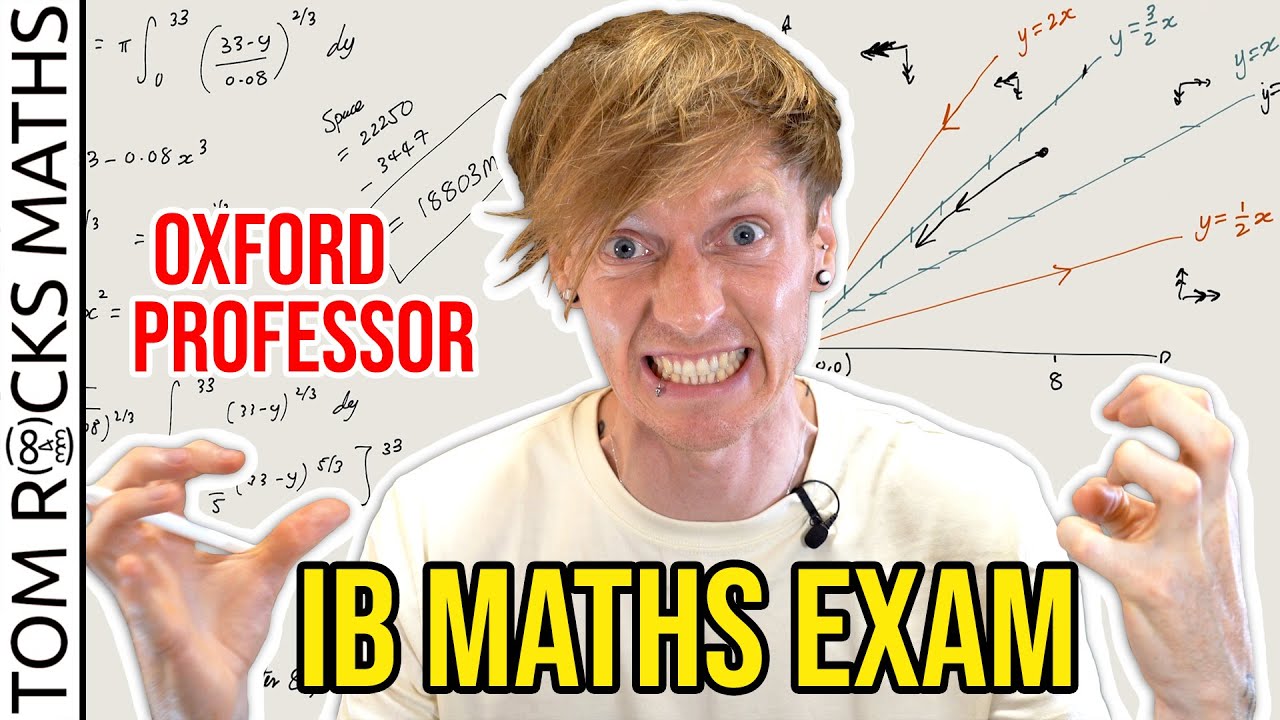
Oxford University Mathematician takes High School IB Maths Exam

Oxford Mathematician Challenges Physics Teacher to A Level Maths Exam
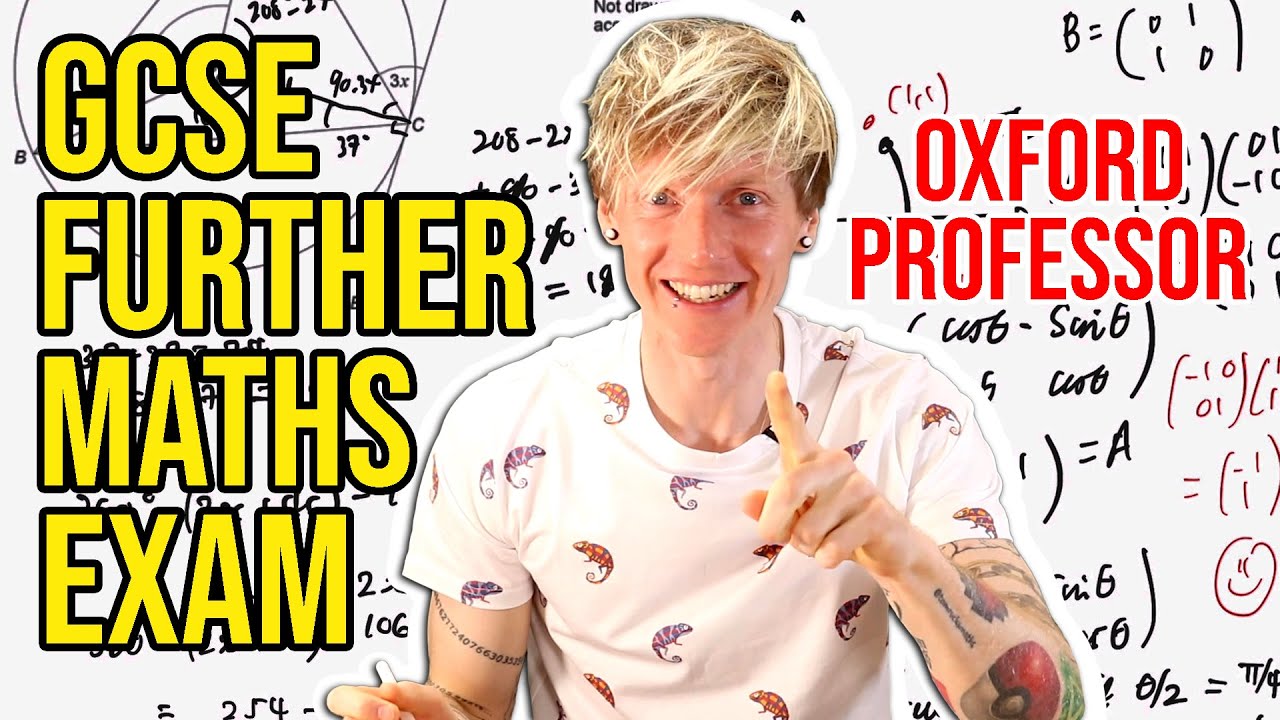
Oxford University Mathematician takes High School GCSE Further Maths Exam
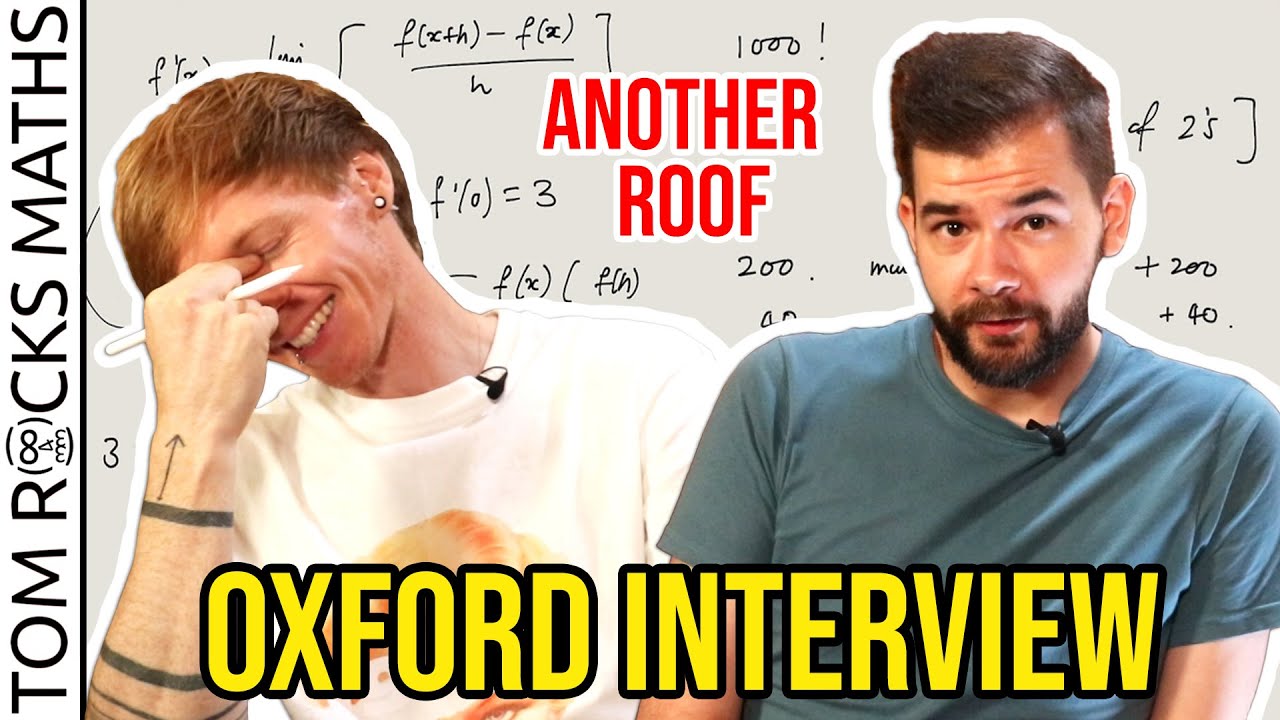
Oxford University Mathematician takes Admissions Interview (with @AnotherRoof)
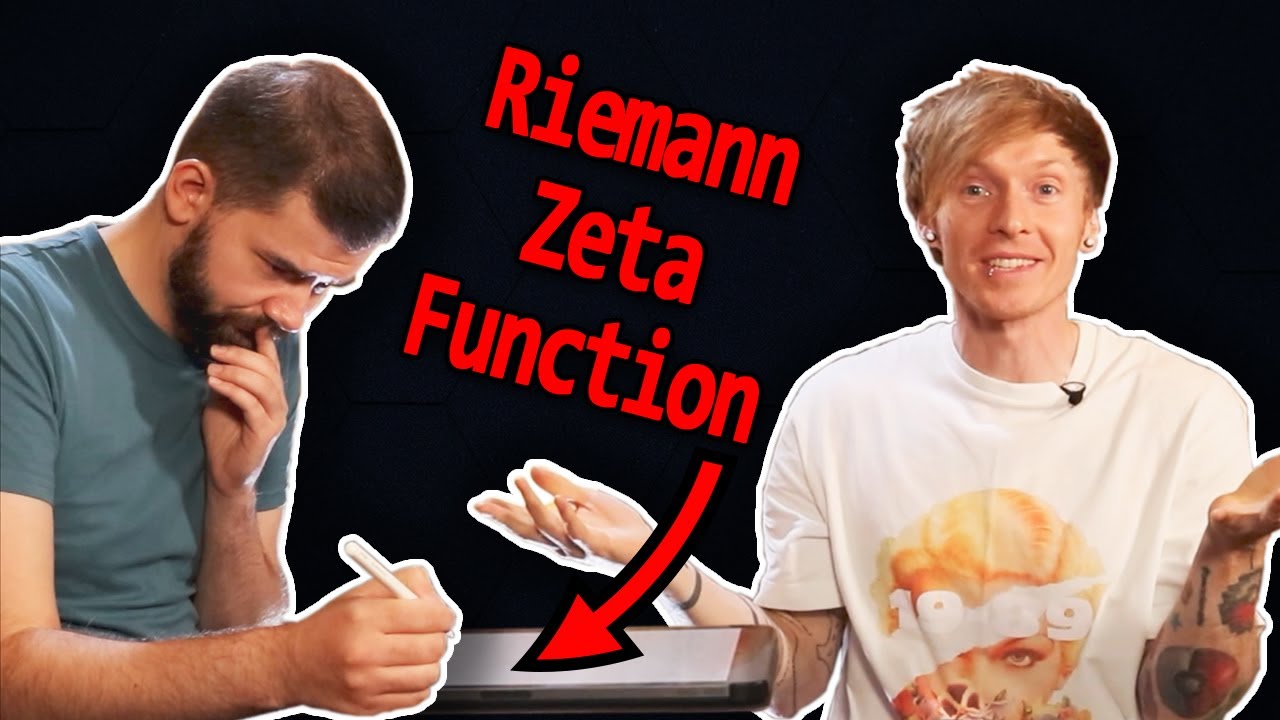
How Hard is an Oxford Maths Interview? Feat. Tom Rocks Maths
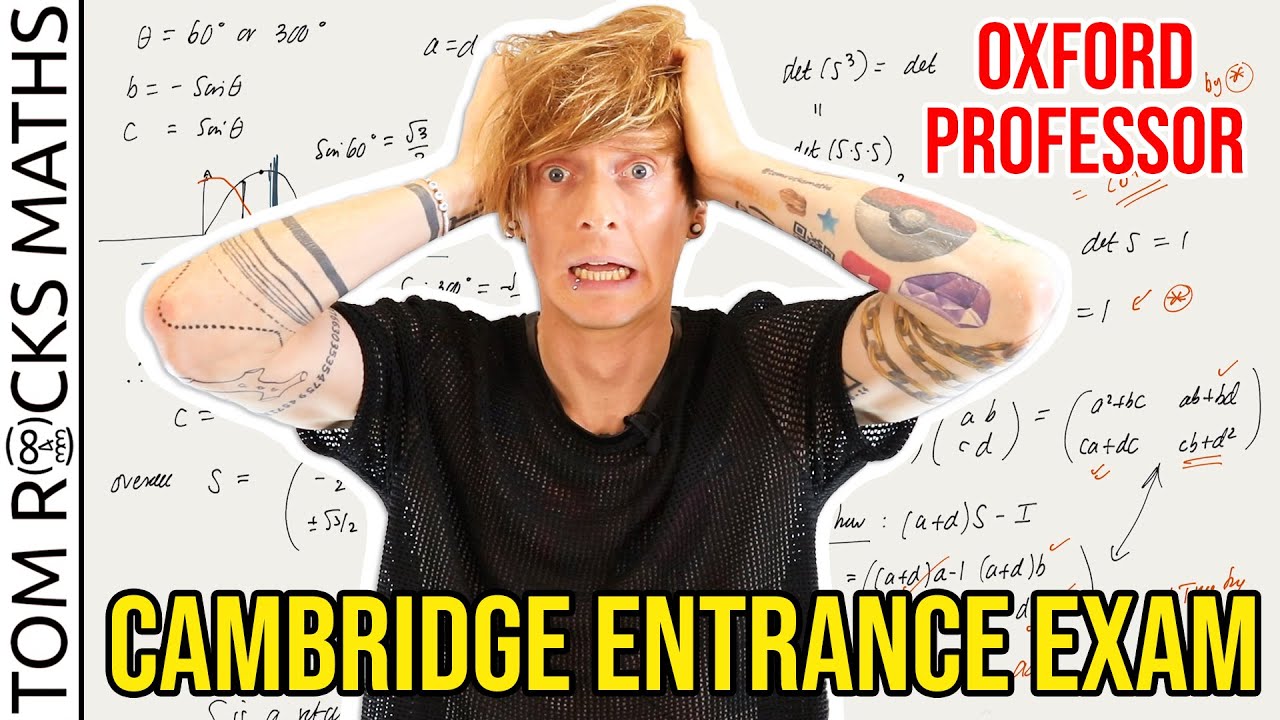
Oxford University Mathematician takes Cambridge Entrance Exam (STEP Paper) PART 1
5.0 / 5 (0 votes)
Thanks for rating: